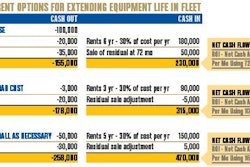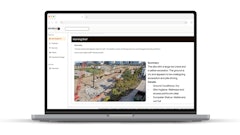Things are going great. Business is good. Revenues are better than last year and you expect higher revenues again in 2017. Things could not be better.
A word of caution: Every dollar of sales requires some working capital to support it. In other words, the more you sell, the more working capital you need to support that increase in business.
Think about it. You incur expenses before you start a project. You do the job and progress bill as you go along. But no matter how hard you try, the bills come due before you collect on your invoices. As a result, you need to have cash reserves or a line of credit to keep your cash flow positive.
Believe it or not, you can sell yourself out of business. The business grows and at some point your capital position is unable to carry the load, the payable list gets longer, you use up your bank lines and you finally run out of cash. Next stop — bankruptcy court.
There is a Growth Potential Index formula you can use to calculate how much you can expand your business using internally generated funds:
Profit After Tax x 100 / AR + Inventory - AP
If you plan to grow faster than this estimate reflects, you may have to put more capital in the business or be able to borrow more money to operate it.
Plan Ahead to Secure Systems and Financing
I’m sure every one of you knows a contractor that took on more work than they could handle, and as a result ran out of money and closed up shop. If you could ask them what happened, they will likely say they ran out of cash and were unable to borrow more or contribute more to keep the business going.
Needless to say, it pays to properly plan any thoughts of expanding your operation. Even if you are only expecting a 20% growth spurt, I would suggest you take the time to properly decide whether you can do that in a comfortable fashion.
Take your time and don’t kid yourself. Throw in some cushion so you can sleep nights. Don’t forget to account for income taxes you will need to pay regarding income earned from the company business.
You need to have a solid accounting system (one you understand) and a pretty good knowledge of the cash flow process. If either of these requirements are missing, you may want to have your accountant work it through for you.
Make sure the cash flow statements are understandable so you know whether you need to speak to your banker about extending more credit to cover your new level of growth. Be aware that bankers do not like to cover 100% of growth capital and will require that you add something to the pot, as well.
Not sure you can get the required financing to do the work? Then don’t take it on, and put another year of profits into your bank account to give it a try next year. Believe me, it beats the alternative.
For example, if you don’t have any reserves in your bank account and take all the profits out of the business to buy equipment, you’re probably not a candidate to consider any meaningful expansion. Get your ducks in a row before you try it.
Make Sure Required Resources Are In Place
Up to this point, we’ve been discussing internal growth without a need for additional funding. You can, of course, move it up a notch if you have collateral you can borrow against or have an investor that is willing to join forces with you.
But even if you have the financial resources, you still need to plan out the program, and ensure that your system can handle the additional activity and you have the talent to complete and review the work being done. It’s easy to get a little sloppy using other peoples’ money, so be careful or you will be using up your own money sooner than you think.
The construction business is a risky business to begin with. Let’s not add to that risk by taking on work you’re not able to fund, or cost-effectively complete. Do your homework and you will sleep better.
Business growth has two main requirements:
- Capital and people, and
- An industry-specific business plan that drills down to monthly cash flow requirements.



















